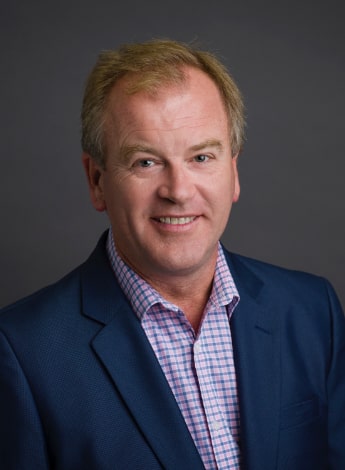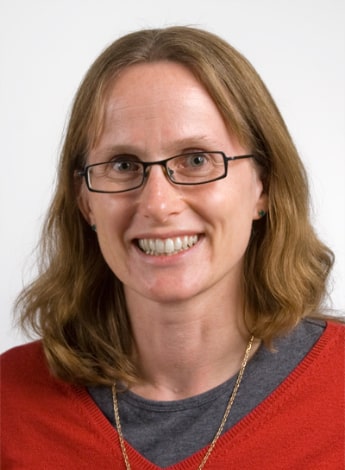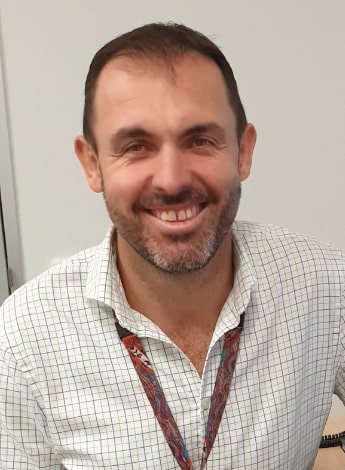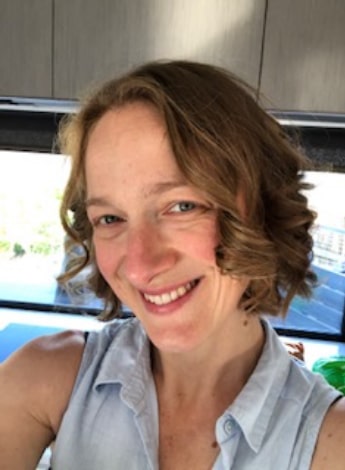
Physio careers moving in the right direction

A new graduate physiotherapist will have a career passage laid out before them from day one, a suburban practitioner can use their knowledge to build expertise, and researchers can contribute to advancing excellence in the profession.
The opportunity to move along the APA Career Pathways has never been more clear.
The last two years have arguably seen some of the biggest changes in the structure and delivery of the physiotherapy Career Pathways in the profession’s history, but what does it all mean for practitioners at various stages of their careers working across the broad spectrum of the profession?
And why are the Career Pathways of such importance to clinicians, the profession and the broader healthcare landscape?
Put simply, the Career Pathways are a way of recognising, credentialing and training physiotherapists, as well as providing all physiotherapists with ongoing education that begins as a graduate and continues on to specialist or post-specialist level.
But it is also much more than that. The Pathways are a tool by which the profession can create a scientifically pinned and highly trained workforce, containing a specialised stream.
Fundamentally speaking, the Career Pathways provide a structure for physiotherapists to know where they could head with their career regardless of what point they happen to be in their professional life.
For many years the Career Pathways were, for some, more of an abstract notion, a gargantuan project being shaped in the background and something long talked about as being a game changer for the profession.
While a physiotherapy career pathway has always existed, it has been something that had evolved relatively slowly over time.
However, restructuring of the mechanisms of its delivery in the latter part of this decade by the Career Pathways custodians within the APA, the Australian College of Physiotherapists (the College), has vastly impacted on how the Career Pathways can now be used.
For the first time physiotherapists are in the driver’s seat and can choose to access the Career Pathways in any way they want.
There are options to pursue titling, you can become a specialist, you can undertake your education in the higher education sector then take assessment at the College and still be recognised.
It is the bringing together of a lot of different avenues of education with the ability for physiotherapists to ultimately choose their destiny.
The APA considers the Career Pathways to be a product or an asset that will support physiotherapists from the moment they graduate right through to the end of their career and everything in the middle, says APA National President Phil Calvert.
‘It’s about bringing all those partners together—the university system, the profession (as the APA) and other education providers so that we are not working in silos,’ Phil says
‘We are coordinating offerings for physiotherapists in terms of their education and their career pathway. That’s what is really exciting about this, we haven’t done this in Australia before.
‘The critical outcomes for us will be a really, really skilled workforce that has a clear career path no matter which area you work in, and a workforce that feels solidly supported at whatever stage of that career pathway you are on.
'That, for us, is the ultimate outcome because that will lead to better outcomes for our patients.’
Firm focus
The APA Career Pathways lay down industry-recognised standards that the profession has set, that will be internally and externally recognised.
It maps out frameworks in many areas of physiotherapy which previously didn’t have the competencies, and it sets international benchmarks.
President of the College, Darren Beales, FACP, says the College was previously ‘at the pointy end of the Career Pathways for specialisation or Fellowship’ but had embraced providing direction for entry-level physiotherapists to guide them through their entire career.

Since 2018, the College has introduced new governance, new policies and new procedures to support these changes.
‘It’s about making this accessible for all of the profession,’ says Darren, who was elected as president from the vice president’s role just as the some of the biggest changes to the College were being implemented.
‘For a number of years we had the theoretical framework for what the College might look like. My first year as president, timing wise, corresponded with, “Okay, let’s get down to the implementation”.
‘Structurally we’ve completely changed. We’ve gone from having the College Council and a Board of Censors, where there were maybe 15 to 20 people on those two committees, and one staff member responsible for college activities, to having six standing committees as well as the College Council, meaning an additional 60 or 70 people.
‘And on top of that, many of those standing committees have working parties, so probably the number could be pushed out further,’ says Darren, who had served on the APA Board of Directors and became vice president of the College under then- president Michael Ryan, FACP.
‘That’s been the most immediate change. But with that we had to completely review the regulations. It has been tricky to write regulations for something that you think is going to work. We have had to adapt those as we go along.
'Structurally, that’s been a massive change... it took a year to transition through this structural change, so that now we have those standing committees in place and functioning.’
How it works
There are two major components to the Career Pathways framework— the competency framework and the education framework.
The competency framework features four milestone levels that physiotherapists can progress through, being foundation, intermediate, highly developed and expert.
Physiotherapists can identify where they sit against the four levels and advance through those stages.
The education framework looks at curriculum, teaching, learning outcomes and assessment, the latter being a more recent inclusion.
This year has seen further development of the Career Pathways for physiotherapists across the public, private and academic sectors.
After the APA Board approved a two-tier model of recognition for physiotherapists and specialist physiotherapists (awarded by the Australian College of Physiotherapists), there has been significant effort to develop Fellowship pathways within the College.
The first cohort of Pain specialists is due to sit their exams in March while more than 120 members have achieved Titling in Pain in the first 18 months of applications.
The College also celebrated its first Cancer, Lymphoedema and Palliative Care titled members, noting that members can achieve one, two or three separate credentials in this clinical stream. And 23 members successfully completed the Sports and Exercise Experiential pathway in 12 months.
With a new pathway to Titling for researchers, the College has its first wave of applicants who have completed an Australian master’s by research or Master of Philosophy (Doctor of Philosophy is also eligible as this is a higher level qualification).
A review and expansion of non-clinical pathways to Fellowship is also currently underway. The Original Contribution program will develop into the Research pathway Fellowship of the College.
Darren says there are more specialisation streams currently at various stages of development, including a second non-clinical Leadership/Management stream (the first being Research), and potentially an Advanced Musculoskeletal stream.
The addition of these new integrated career pathways will allow the College to realise new opportunities next year.
‘There’s been a lot of lessons learned from Pain coming into the system, and we need to reflect a bit more on those lessons and inform development of other streams within the College,’ Darren says.
‘Our experience with Pain has taught us that there’s more things we need in place to move forward. But all in all, it’s very exciting.
‘I think the Advanced Practice, in particular, is probably the most developed of all the other ones. That will give the physiotherapist a recognition across states that’s presently not there in terms of recognition within the public health system, and those advanced roles that they perform,’ Darren says.
‘For the College to be the body that credentials, that is a definite sign of increasing maturity as a college.’
So why is specialisation so important to individual physiotherapists and for the broader profession?
Collective knowledge means advocacy power, and Fellowship is the ‘carrot at the end of the stick’ to encourage more and more physiotherapists to commence a pathway to becoming either a Titled/Member, Registrar or Fellow of the College, says Darren.
‘In the past, the Career Pathways for the physiotherapist has been present, but not lucidly defined or readily identifiable. This is changing. And we now envisage a postgraduate journey to Fellowship that might be considered opt-out rather than opt-in.’
APA General Manager, Education James Fitzpatrick says the APA Career Pathways project plays an important role in the health and wellbeing of the Australian community through establishing career pathways based on the competency and education frameworks.
The ultimate goal is to improve the recognition and reward for physiotherapists.

‘The Career Pathways project intended to design a framework of postgraduate quality-assured coursework, mentoring and research with clearly defined optional assessment points,’ James says.
‘This framework joins the universities, the APA and commercial professional development companies to share standards, competencies and learning outcomes at each step of a physiotherapist’s career.
'By doing this, physiotherapists have greater choice on where, when and how they would like to access their learning.
‘The Career Pathways are transparent, flexible and agile to accommodate member needs, while being demonstrable in the level of achievement.
'Employers and external agencies can recognise the competencies developed by completion of continuing professional development at a prescribed milestone or level of performance, and competencies attained where assessment has been successfully completed.
‘The Career Pathways enable recognition of progressive competence development along a learning continuum.
'Acknowledging the learning outcomes of higher education courses of study, the APA will facilitate targeted education to meet the needs of the proession across areas of practice and individuals’ career stages,’ James says.
For now though, Darren says, there is still some internal evaluation to be done at the College to consider the impacts on the profession down the track.
‘There’s a lot we don’t know about the external environment, but there’s still quite a bit of work to be done in that area, so that we can understand that a little better.
'The APA has broadly made a decision that, externally, there will be a promotion of physiotherapists and specialist physiotherapists/Fellows of the College, but we’re just not at the stage where that’s really been enacted yet,’ he says.
Physiotherapy is such an all- encompassing profession and can make a big impact in a variety of areas, and there is no doubt that the profession is continually broadening its scope.
Physiotherapists are recognised as industry leaders in healthcare, so the challenge is to stay there as other professions develop and grow, as the exercise and wellness spaces have.
So how can the individual practitioner make an impact via the Career Pathways?
Darren says with Fellowship of the College comes with huge personal development, a recognition from peers, and an elevation of standing within the broader healthcare community and with external stakeholders such as government and third party insurers.
And it will be easier for consumers to identify physiotherapists and their level of expertise as either a physiotherapist or as a specialist, he says.
‘There is no doubt that the personal experience and growth that the registrars report from going through the training program is immense. So, from a personal development perspective, I think that’s a massive plus,’ Darren says.
‘I think a lot of people who have become a specialist have found that it transforms their businesses in ways that they would not have expected.
'It’s different state to state, and there are still challenges for people around that. But as the APA starts promoting specialisation more, there’ll be greater recognition of that more broadly.
‘I also think one of the great benefits of the Career Pathways will be the improvement of intra-professional referral, which is done relatively poorly in physiotherapy.
'Having expert clinicians in the suburban practices would hopefully create a generational change in the way physiotherapists refer to one another. Telehealth can expand access to specialist physiotherapists more broadly.’
For the public sector physiotherapist, the benefits of undertaking titling and specialisation training also include that recognition from peers of the expert level of achievement as well as industry-recognised standards, and a skillset that paves the way for mobility both nationally and internationally.
James says consumer recognition is an another benefit, as is clarity of recognition and reward.
‘As we train more specialists we will advocate heavily for the reward from funding bodies and employers,’ he says.
Darren says the College is very keen to further develop the Career Pathways to support the educational aspirations of the membership.
‘In the last 18 months there has been massive changes. It’s exciting. We are looking at it as a generational change. ‘It’s possibly our one opportunity to do this, so we are taking our time, but good progress is being made,’ Darren says.
‘And personally I’d just like to thank all the people, the staff, and the members who are putting in a lot of hard work to advance the Career Pathways in the College. There are a lot of people doing a lot of important work.’
Studying the true costs of falls in older people
A drive to put physiotherapy intervention at the forefront of falls prevention in the older adults has seen Professor Cathie Sherrington, FACP, pursue Fellowship of the Australian College of Physiotherapists (the College) by Original Contribution (OC).
Why did you decide to become a Fellow of the College via the OC pathway?
I considered it a good opportunity to gain recognition for, and enhance, dissemination of my research work to date. I was also keen to raise the profile of evidence about the role of physical activity interventions (especially exercise) in falls prevention and enhancement of physical function in older adults within the profession.
When did you start, and finish? And how did you find the process; was it more or less challenging than you expected?
I started in 2017 and finished in 2019. The process worked well. My supervisor, Professor Chris Maher, was very supportive. We met regularly to review progress.
As expected, it was challenging to prioritise work on the Original Contribution thesis while balancing other work and family commitments.
What did you like, dislike or find the most challenging?
As researchers we undergo a lot of peer review with every paper, grant application and promotion application. I wonder whether the College could take advantage of this previous peer review in assessing the Original Contribution rather than requiring a new thesis to be written.
What impact will achieving Fellowship have on your career?
It is an important recognition of my leadership within the profession. I have been pleased to be able to include this on grant applications submitted since it was awarded.

What was the highlight of the program and what did you learn from the process?
The kind and insightful comments from my examiners were a highlight for me.
Your OC was on ‘Exercise interventions to prevent falls and enhance mobility in older adults: effectiveness and cost-effectiveness’, something you chose to pursue further education about? Why is this your passion?
Working as a clinical physiotherapist for 10 years in rehabilitation and aged care settings, I saw firsthand the importance of the problem of falls and mobility impairment and how much physiotherapists can make a difference.
I was frustrated that we were not always in a position to provide the interventions we had the skills to, due to limited resources and pressure to discharge patients.
I also completed a Master of Public Health degree and saw that falls, mobility impairment and physical inactivity were huge inter-related public health issues that physiotherapists could contribute importantly to.
This led me to undertake research studies (trials and systematic reviews) to enhance the evidence base and to work with health economists to investigate cost-effectiveness.
We did indeed find that population-wide investment in fall prevention programs would be a cost-effective approach. Our system is very good at funding evidence- based medications but not at funding evidence-based non-pharmacological interventions.
If my research can contribute to changing this, I will be very pleased.
What advice would you have for others looking to pursue Fellowship by OC?
I don’t think there is great awareness of the process for Fellowship by Original Contribution among physiotherapist researchers. I’d encourage all physiotherapists with PhDs to familiarise themselves with the current processes, especially the new pathway, and keep an eye out for future changes to the process.
Professor Cathie Sherrington, FACP, is a Professorial Research Fellow, School of Public Health and Institute for Musculoskeletal Health, University of Sydney/Sydney Local Health District, where she leads the physical activity, ageing and disability research stream. Cathie’s research focuses on the design and evaluation of exercise interventions for older people and those with disabilities. She has a clinical background as a physiotherapist in aged care and rehabilitation.
Follow your own path to Fellowship
After winning a key award for her work in nocturia, Wendy Bower felt inspired enough to devote time and money into pursuing Fellowship of the Australian College of Physiotherapists (the College) by Original Contribution (OC). Here, Wendy, FACP, talks about her journey.
Why did you decide to become a Fellow of the College via the OC pathway?
Many years ago I considered specialisation; however, the process involved being examined on content that was not relevant to my interests or clinical practice.
As a clinician and researcher I am drawn to grey areas of knowledge and practice with the aim of clarifying, measuring and improving outcomes. The opportunity to present work that was pushing the boundaries of mainstream physiotherapy was a good fit with becoming a Fellow by OC.
When did you start and finish? And how did you find the process?
I wrote my dissertation in six months. This was only possible because I had been developing a new body of work in the preceding few years and I had a story ready to tell.
The fact that a summary of the work won the Best Presentation award at the WCPT conference in South Africa in 2017 gave me confidence to invest time in the Fellowship by OC process. The process was autonomous.
Unlike the specialisation process there were no fixed milestones, registrar processes, written submissions or vivas.
Essentially I was writing a book; each chapter was an aspect of scientific enquiry that had a clinical application. Best practice in my chosen area is interdisciplinary, meaning that my physiotherapy OC supervisor was on the journey with me.
What did you like, dislike or find the most challenging?
In some ways I felt guilty that the process was 100 per cent enjoyable. Preparing my submission was similar to the process for writing a higher degree thesis—identifying gaps and telling a story.
My biggest disappointment was that the conferring ceremony for Fellows with whom I ‘graduated’ was not convened within the APA conference, but in a stand-alone College ceremony only attended by family and friends.
I felt at the time as though the profession at large did not fundamentally value the award or the effort involved in becoming a Fellow.

What impact will achieving Fellowship have on your career?
At the time of being awarded my Fellowship I had little insight into whether or not there would be an impact on my career. I certainly knew that there would be no financial advantage, as would be the case in the medical profession, for example.
Neither would colleagues refer to a Fellow in their role as a specialist practitioner. Our profession has not arrived at a point where recognition of Fellows informs care pathways.
This was not an issue in my case, as I am predominantly interested in research directing care. I believe the only impact that my Fellowship has conferred is that medical specialists think that I am one of them.
Clearly this response may be specific to me; however, it supports the need and effort to develop a relevant career pathway under the College umbrella.
The outcome for me is that I am now a part of the change process, having recently been appointed to the College Council. It is a time of re-assessment and change, and I look forward to joining colleagues in planning a way forward that brings value to the profession.
Why is ‘Evaluation of nocturia: towards a diagnostic cascade’ something you chose to pursue further education about? Why is this your passion?
Working in the clinical area of pelvic health and continence, I noticed that patients would often report improvement in urinary urgency, frequency, stress incontinence, bowel function and voiding dynamics but continue to wake multiple time each night to pass urine.
Trying to understand how treatment strategies failed to improve this lower urinary tract symptom revealed the need for a more holistic view of nocturia.
Since that time it has become widely accepted that nocturia is not a bladder symptom per se, but a reflection of multiple possible comorbidities that co-exist with continence issues.
In order to help us identify potential causes during the clinical encounter I synthesised risk factor knowledge and developed a nocturia causality screening tool.
This then led to a scoring system, reliability and validity studies, work establishing sensitivity to intervention and a cascade of relevant interventions.
The metric has been translated into a number of languages and is being used to identify underlying medical causes of nocturia and to direct tailored treatment.
What advice would you have for others looking to pursue Fellowship by OC, and why?
I believe that Fellowship by OC is needed within the profession to offer clinicians the opportunity to develop their ideas without being diverted into areas of minimal interest.
The process should be of interest to clinicians working with specific patient groups or dysfunctions where big questions are still unanswered.
Observations made at the coalface are valid and important prompts for questions that underlie relevant research. The overarching aim of the OC pathway is to contribute to the physiotherapy knowledge base in a way that informs excellent physiotherapy practice and delivery of care.
Wendy Bower, FACP, is the physiotherapy research lead and senior continence clinician at The Royal Melbourne Hospital; an associate professor, Faculty of Medicine, Dentistry and Health Sciences at The University of Melbourne; and a visiting professor at Ghent University in Belgium. Wendy is a member of the editorial committee of the Australia New Zealand Continence Journal and she regularly teaches modules on APA courses.
Big gains in challenege of pain specialisation
Although interrupted by COVID-19 this year, the first cohort of six Pain registrars to seek specialisation through the College are on track to sit their exams in March next year.
Here, InMotion speaks with two registrars about their motivation for, and experience of, undertaking the specialisation process.
Darren Doherty
There is something very special about being in the first cohort of Pain physiotherapists to complete the Specialist Training Program at the College. APA Pain Physiotherapist Darren Doherty is proud of this, it’s an achievement he will look back on in the years to come.
But the timing of taking on the training program couldn’t have been more challenging for him.
Darren recently moved into more of a management role as the acting team leader of the Gold Coast Interdisciplinary and Persistent Pain Centre.
The added responsibilities that entailed, coupled with the turmoil in his personal life, impacted on his ability to focus on his studies as a Pain registrar as keenly as he’d hoped.
He has, however, found that the process of specialisation has given him a clear focal point, taken him outside his comfort zone and elevated his confidence as a pain physiotherapist.
‘Unfortunately, I had been going through a divorce and I’ve got three little kids and then because I’ve moved away from my clinical role to a management role, I’ve got more responsibilities and stressors at work,’ Darren says.
‘I think for a long time in my role, I was very, very comfortable because the centre that we run, being a tertiary-level centre, and myself being one of only very few pain physiotherapists, it’s like my word was taken as gospel because I’m it.’
Determined to push the boundaries of his work and his knowledge, Darren was attracted to undertake specialisation for the broad spectrum of skills, beyond clinical skills, that it offers.
As well as improving and learning new clinical skills, Darren says he has been excited to delve into other aspects of the work such as advocacy, education, research and professional development.

To help meet the challenges of balancing work, home life and study, Darren set about creating a timetable that covered almost all aspects of his life.
To help keep himself on track, he segmented his time into completing his work for specialisation as well as for activities such as exercise, eating and sleeping.
As a ‘go with the flow’ person prior to specialisation, this was something of an anathema. But, he concedes, it has worked.
‘I found pretty early on that without being organised, it puts yourself under stress. Then, the next thing you know you’re behind the eight ball,’ Darren says.
‘Monitoring is just step one to getting yourself organised. And that’s not in just doing the work, you have to make sure you’re looking after yourself as well. That’s really important.’
With just three months to go before sitting exams (registrars sat mock exams in March this year under the supervision of specialists), Darren has found working with his mentor, Michelle Du Plessis, an APA Musculoskeletal Specialist (as awarded by the Australian College of Physiotherapists in 2016), an inspiration.
So much so that when Darren graduates he hopes to then be able to mentor other titled pain physiotherapists who want to complete the specialisation process.
Darren has also worked closely with fellow Brisbane-based pain registrar, APA Pain Physiotherapist and APA Occupational Health Physiotherapist Matt Forster.
‘Michelle [Du Plessis] is amazing, and not just from a physio mentor perspective but for a being a friend, she’s really been supportive,’ Darren says.
‘Matt Forster is in Brisbane so we were put together quite early, geographically. We’ve been working quite closely together as a team to get ourselves through this process.
'I think that’s the strength of the specialisation process too. The beauty of having a small cohort is that it’s a team approach; we’re not six individuals trying to get through, we’re a team looking to achieve the same goal. And that’s how we look at things.’
Darren Doherty has been a senior clinician, team leader and researcher at the Gold Coast Persistent Pain Centre since 2011. Darren is an APA Pain Physiotherapist and presently in the inaugural cohort of pain specialisation registrars at the Australian College of Physiotherapists. Along with pain neuroscience and its clinical applications, he has a keen interest in innovative health management solutions using technology, and has published research in the use of telehealth for pain management for rural and remote patients.
Michelle Wilson
'A ‘hell of a lot of organisation’, very supportive workplaces and an equally supportive husband have been APA Pain Physiotherapist Michelle Wilson’s anchors as she juggles the roles of pain specialisation registrar, working pain physiotherapist, wife and mother of two children aged one and three.
When deciding to join the first cohort of Pain registrars to embark on the pain specialisation Career Pathway, Michelle was attracted by the commitment as well as the recognition of her skill level that specialisation would bring, both within the profession and in the broader health community.
And there was also the added attraction of stepping outside of her comfort zone, of challenging herself and of becoming a stronger clinician.
‘So that was a purely circumstantial reason but also, in terms of it being the first, I really liked the idea of being part of shaping what pain physiotherapy is,’ Michelle says.
‘Pain physios have a unique set of skills, so when we were able to get recognition of that through specialisation I thought that was an important thing to be able to support.
'And I thought it was important to do for myself, so that I could differentiate myself from other physios in the same way that other physios can highlight their own skills.’
Like her fellow Pain registrar Darren Doherty, Michelle Wilson had been in her role at the Hunter Integrated Pain Service at Newcastle, in northern New South Wales, for many years, and she felt the need to extend herself as a clinician and as a lifelong learner when she decided to pursue specialisation.
Both registrars also work in public health and they equally share a passion for having a public health voice in the pain physiotherapy spectrum.
Michelle works with patients with complex and chronic pain, largely in groups, assessing and treating in groups and helping them through behaviour change principles to increase function and quality of life.
The Hunter Integrated Pain Service, where Michelle worked as a physiotherapist for eight years until recently moving to Tasmania, is a tertiary pain clinic which has a big focus on education, partnering with the local university.
The team at the service also undertakes research within their work group, most recently describing service design innovation that harness patient engagement and active treatment participation.

‘We were really big on treating and assessing people in groups and focusing on how giving up ownership and empowering the patient can actually help them with behaviour change, moving to a truly person-centred approach,’ she says.
In her new role as musculoskeletal physiotherapy team leader at Royal Hobart Hospital, Michelle has the opportunity to work in the Persistent Pain Service, which services the whole of Tasmania.
She has enjoyed gaining experience from working in two tertiary pain clinics, which not many people get the opportunity to do.
When Michelle started her specialisation journey she was on maternity leave, completing course components from home, before returning to work.
She is tirelessly supported by facilitators, APA Pain Physiotherapist Lois Tonkin and APA Musculoskeletal Specialist and APA Pain Physiotherapist Peter Roberts.
And she has also felt very supported by her husband, Brendan Wilson, an APA Sports and Exercise Physiotherapist and an APA Musculoskeletal Physiotherapist, who Michelle says has been a steady compass for her throughout the duration of her study.
One of the biggest hurdles Michelle says she has had to overcome is the time commitment of between 10 and 15 hours a week. (‘For me, I suspect it’s more than that, but that’s what the collective wisdom of past registrars says.’)
‘I was feeling like I was very comfortable and very competent at my job, and then to be thrown into the mix with a whole heap of other people who are competent and comfortable in their job—suddenly you’re a much smaller fish in a big pond,’ Michelle says.
‘Then you have people who are critical, in a supportive way, of what you do, so you are a bit dismantled by the whole process and have to find your own way again.
'They obviously do that for a reason, and I am a much more confident, mature and well-rounded physiotherapist because of it. But having to swallow that is a bit tricky at first, it has been the hardest thing.’
Michelle Wilson is an APA Pain Physiotherapist who recently moved with her family from Newcastle to Hobart, and is now the team leader of the musculoskeletal physiotherapy team at Royal Hobart Hospital. Michelle has eight years’ experience working with patients with complex pain presentations in tertiary pain clinics and is passionate about maximising patient self- efficacy as a cornerstone of treatment. She graduated from University of Newcastle in 2006 and has worked in the public health system throughout her career and has always been drawn to patients who were labelled as ‘challenging’.
© Copyright 2025 by Australian Physiotherapy Association. All rights reserved.





